As we all know, composting is one of the economic solutions to deal with compostable products, that is organic waste. As the final product of composting, organic waste compost is a kind of high-quality organic fertilizer. In addition, you also can make organic waste compost into powder or pellets. The production process of granular organic fertilizer is more complex than that of powdery organic fertilizer. If you want to produce commercial powdered fertilizer, the compost fertilizer manufacturing process will include deep processing as well as composting. And the deep processing mainly includes crushing, screening and packaging. In terms of materials for composting, composting technology and compost fertilizer making machines, we will give you a detailed introduction in the following parts.
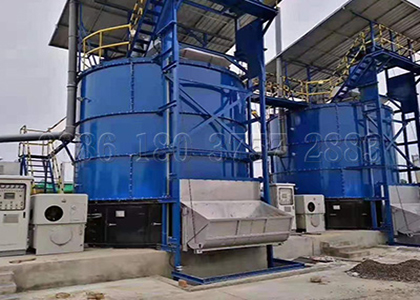
What kinds of compostable materials can be used for making powdery organic fertilizer?
Compost fertilizer manufacturing process is used for making powdery fertilizer. According to our experience, the compostable materials include:
- Animal manure: Poultry manure (chicken manure), livestock manure (pig manure, cattle manure, sheep manure and horse manure) and other uncommon manure (vermicompost, bat guano)
- Agricultural waste: Straw, corn straw, vegetable waste and so on.
- Garden waste: Leaves, small branches and grass
- Municipal waste: Sludge, food waste (from restaurants and communities)
Note: All of these compostable materials can be used for making organic fertilizer. However, if you want to produce commercial compost fertilizer, the animal manure will occupy at least 60% of whole waste for composting. Because animal manure has more nutrient elements. Meanwhile, you can add other wastes as auxiliary material, which can adjust water content, C/N ratio and so on. In a short, animal manure is the most common organic waste for making organic manure compost.
SX tells you how to make a powder fertilizer production line
As mentioned above, powder fertilizer production line includes composting and deep processing. Composting mainly utilizes microorganisms to digest organic matters in organic waste, so as to convert them into absorbable nutrients. Deep processing is mainly used for producing commercial powdery fertilizer. Meanwhile, you should adopt machines to make composted organic waste into fine and pure compost fertilizer. Firstly, you should prepare a piece of vacant land, where you can make compost pile and install compost production machines. Then you should collect organic waste for composting. We recommend you prepare raw materials nearby, which can save cost. Finally, you can choose suitable equipment to help you in compost fertilizer manufacturing process. And it can be decided by composting scale and labor. We will introduce the selection (methods) of equipment in the following parts.
Professional composting technology from SEEC in compost fertilizer manufacturing process
Composting is the beginning of compost fertilizer manufacturing process, which also decide the success of organic compost fertilizer production. Because the quality of fermented organic waste directly influences the fertilizer effect. The composting technology mainly refers to the control of fermentation conditions, such as water content, temperature and oxygen content, composting size and so on. And the suitable water content for composting is 50% to 60%. However, different types of composting methods correspond to different composting technologies. Here we will recommend three professional composting methods, windrow composting, composting in fermentation groove and composting in aerobic compost bin.
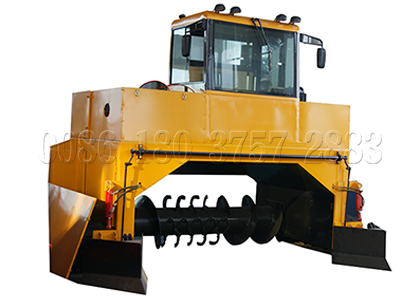
Windrow composting
Windrow composting means that you should pile organic waste together in long rows. The height of compost pile is usually 0.8m, the width is 2m, and the length is adjustable according to the size of filed. For the size of compost pile, you can refer to the capacity of compost windrow turner you purchase. Too higher compost pile will increase the pressure on organic waste in the bottom, which may cause partially anaerobic fermentation and caking. On the contrary, if the compost pile is too small, the temperature will rise slowly and lead to the failure of composting. Before composting, you should adjust water content by adding straw, sawdust or solid liquid separator machine. In addition, you can use thermograph to observe and record temperature. When the temperature rises to 60℃-70℃, you should turn the compost pile to adjust temperature and increase oxygen content.
Composting in fermentation groove
For this composting method, you should build some grooves that are made of three walls. The fermentation groove can accommodate more organic waste than windrow composting. Unlike windrow composting, it is not easy for labor to turn the organic waste in fermentation groove. Therefore, you’d better adopt compost turner to turn organic waste in groove. Furthermore, the depth of organic waste should be smaller than that of walls, or organic waste will spill from grooves. The control of water content, temperature and oxygen content in groove type composting is same to those of windrow composting. What’s more, you should pay attention to water content during composting process. And SEEC compost turner can properly increase moisture by equipped water spray projector system. Finally, when the smell gradually disappears and the volume never change, the fermentation is finished.
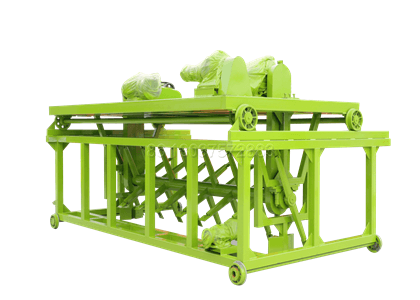
Composting in aerobic compost bin
Unlike the former two composting methods, composting in aerobic can save much labour. After pre-treatment (adjust water content and add proper microbial inoculant), SEEC aerobic compost bin can automatically control the composting process. There is stirring apparatus in aerobic compost bin, which can regularly turn and stir organic waste. In addition, there is air supply system and temperature sensor. When the temperature of organic waste cannot achieve best fermentation condition, the air supply system will send warm air so as to guarantee good fermentation environment. In addition, there is biological deodorant system, which can eliminate air pollution. Finally, aerobic compost bin will finish composting in 7 to 10 days, which can accelerate compost fertilizer manufacturing process.
Besides composting, what else should you do to make commercial organic compost fertilizer?
After composting, next steps of compost fertilizer manufacturing process include crushing, screening and packaging. The function of crushing process is to eliminate caking and make fine fertilizer powder. In terms of screening, it can select out impurities in fermented organic waste, so as to improve the quality and purity of powdered fertilizer. Meanwhile, belt conveyor will send fertilizer powder to fertilizer packaging machine. After this process, you can obtain bagged compost fertilizer, which can be used as commercial products. All these three steps belong to deep processing on fermented organic fertilizer.
During compost fertilizer manufacturing process, SEEC can provide you multiple compost fertilizer making machines
According to above description, compost fertilizer manufacturing process need compost turner, crushing equipment, screening equipment and packaging equipment. As organic fertilizer equipment manufacturer, SEEC can provide you all these organic compost making machines.
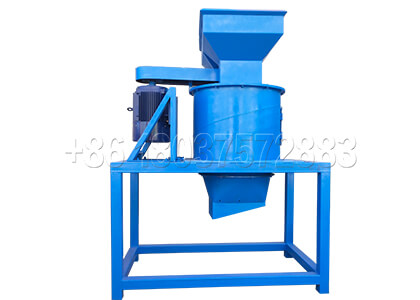
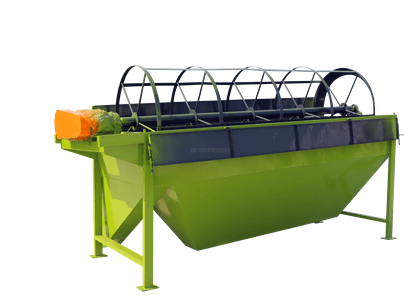
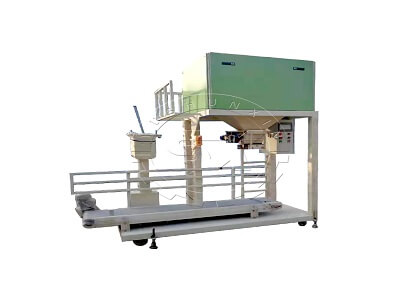
SEEC organic waste composting equipment
SEEC aerobic composting equipment include compost turner and aerobic fermentation tank. Compost turner includes compost windrow turner, compost turner for composting in fermentation groove. All of them can both turn the organic waste to adjust fermentation conditions and crush caking in organic waste.
Compost windrow turner includes self-propelled compost turner and crawler type compost turner. The former adopts four-wheel design, which is easy for operation. It is suitable for small scale organic waste composting. In addition, its price is affordable. The latter adopts rubber track chassis, which can provide stable support to the whole machine during composting. What’s more, the cab belongs to closed environment, which can insulate heat and odor during turning organic waste. Therefore, the latter can provide a suitable working environment for driver.
SEEC fertilizer machines for deep processing of compost fertilizer
Compost fertilizer crushing equipment: There are new type vertical crusher, semi-wet material crusher and hammer crusher. All of them can crush caking in fermented organic waste. The vertical crusher is our patent equipment, whose crushing degree is adjustable. The hammer crusher is suitable for dealing with large scale compost fertilizer.
Screening equipment for compost fertilizer: SEEC mainly manufacturing two types screening equipment, rotary screen machine and vibrating screen machine. The capacity of rotary screen machine ranges from 1 to 20 t/h. It is featured with high screening efficiency, low noise, small amount of dust and long service of life. And the latter has multiple screening specifications and compact structure.
Compost fertilizer packaging machine: It can finish feeding, filling, sealing and packaging. The operation of bagging machine just needs one or two person. The weighing range of packaging machine is 25kg to 50kg.
Special powdery fertilizer made by SEEC compost production machine —organic nitrogen powder fertilizer & powdery bio-fertilizer
The commercial compost fertilizer has higher requirements on components. Therefore, you can add some other elements to composted organic waste, which will increase fertilizer effect. Here we will introduce organic nitrogen powder fertilizer and powdery bio-fertilizer. You can add nitrogen fertilizer or microbial inoculants after screening process of compost fertilizer manufacturing process. In order to make homogeneous fertilizer effect, you should adopt horizontal or disc mixer to blend them evenly.
Q&A
1. What is the installation area of 1 ton/h organic fertilizer powder production line?
According to our experience, the installation area for 1 ton/h powdery fertilizer line is 500 to 800m2.
2. Is there any additional cost for installation?
In terms of the installation, we can send our installation engineer to give you professional instruction. Meanwhile, you need to bear related expenses, including air tickets, accommodation and installation fees. For the detailed information, you can contact with me by info@organicfertilizerplants.com.
3. How long will the installation take?
The installation time depends on the quantity of equipment. Generally speaking, it usually takes 15-20 work days.